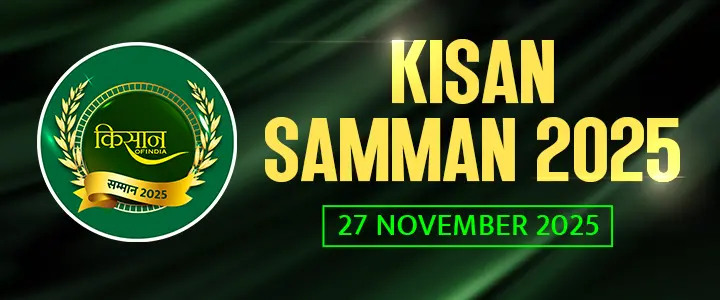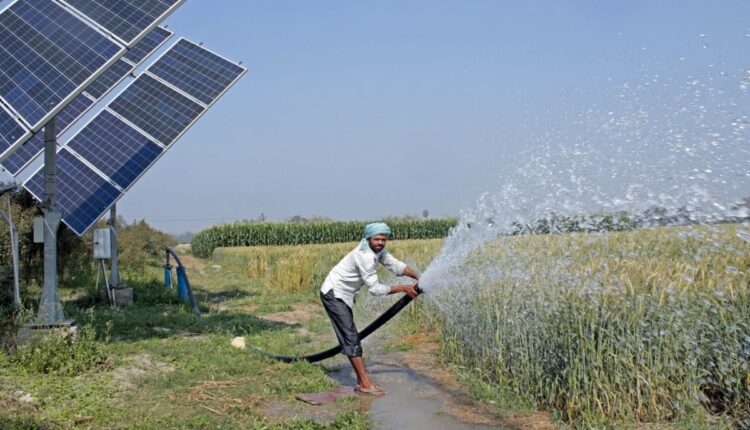The Curiosity Around Magnetised Water Irrigation : Science or Speculation in Indian Farms?
Water Irrigation: As India grapples with growing water scarcity, land degradation, and the need for climate-resilient agriculture, innovative techniques, no matter how unconventional are drawing attention. One such method is magnetised water irrigation. It involves passing water through a magnetic field before using it for irrigation. The idea is that such treated water changes in structure, becomes “softer,” improves nutrient solubility, and enhances water-use efficiency.
This might sound like pseudoscience to some, but a number of farmers and research institutions in India and abroad have been quietly experimenting with this method. With increasing pressure on sustainable water use, many Indian farmers are curious: Can this low-cost, non-chemical intervention make a difference to their crops? Or is it another passing trend with no real-world impact?
To understand its potential, we must explore how magnetised water is supposed to work, what the global and Indian scientific community has found, and how Indian farmers have responded to early experiments. This article draws from research papers, university trials, and farmer feedback to investigate the promise and pitfalls of magnetised water irrigation in the Indian context.
The Science Behind Magnetised Water – What Really Changes?
Water is a polar molecule. Its molecular structure, a V-shaped arrangement of two hydrogen atoms and one oxygen atom gives it unique properties like high surface tension and excellent solvent capacity. Proponents of magnetised water argue that passing water through a magnetic field affects its physical and chemical properties, such as:
- Surface tension: Magnetic exposure reportedly reduces water’s surface tension, allowing it to penetrate soil more efficiently.
- Cluster size: Water molecules are said to cluster in smaller groups after magnetic treatment, improving absorption by plant roots.
- Salt solubility: Magnetic treatment may alter how salts dissolve in water, potentially reducing salinity problems.
- pH and conductivity: Some studies suggest changes in pH and electrical conductivity that might affect nutrient availability.
But how real are these claims?
Studies conducted in Egypt, Iran, and China have shown varying results. Some report improved seed germination, growth rate, and yield; others find negligible or inconsistent effects. In India, the scientific inquiry is still in early stages, but a few institutions have published findings:
- TNAU (Tamil Nadu Agricultural University) found that tomato and chilli crops irrigated with magnetised water showed higher biomass and slightly reduced water usage.
- ICAR-CSSRI (Central Soil Salinity Research Institute) observed improved soil moisture retention in saline soil but emphasized the need for multi-season studies.
- PAU (Punjab Agricultural University) reported enhanced root development in wheat, although yield data was inconclusive.
Magnetised water is not “charged” in the electrical sense, it does not carry energy post-treatment. The changes, if any, are molecular and transient. Critics argue that any structural changes in water revert quickly, especially under field conditions. Nonetheless, the low cost, ease of use, and anecdotal success stories keep the curiosity alive.
Indian Experiments and Field Trials – What Have We Learned So Far?
Indian agricultural institutions and innovative farmers have begun to explore magnetised water systems, especially in water-stressed and salinity-affected regions. The idea is appealing: install a magnetic device in your irrigation pipeline, use no chemicals, no electricity, and observe the effects.
TNAU Case Study – Tomato & Chilli In Tamil Nadu, TNAU ran a controlled field trial with tomato and chilli crops. Water passed through a magnetic device with a field strength of around 2000 Gauss. The magnetically treated water was used in one plot, and normal water in the control plot.
Findings:
- Germination rate improved by 10-12% in the magnetised plot.
- Biomass and leaf chlorophyll were significantly higher.
- Water use was reduced by nearly 20% due to better soil penetration.
- Yield increased modestly by around 8% but was statistically significant.
Maharashtra Farmers’ Trials In grape-growing regions like Nashik, some farmers have adopted magnetised water devices sold by local vendors. Grape growers observed slightly earlier flowering and reduced fertigation tank clogging. However, yield increases were marginal and anecdotal. Devices cost between ₹6,000 to ₹15,000.
CSSRI Karnal In saline zones of Haryana, CSSRI conducted pot and micro-plot trials to examine the impact on soil EC (electrical conductivity) and moisture retention. Initial results showed that magnetised water slowed the evaporation rate and slightly improved water infiltration.
Challenges in Research and Trials
While initial findings from universities and on-farm experiments appear promising, several challenges continue to limit the credibility, reproducibility, and wide-scale adoption of magnetised water irrigation in India:
- Short-term Trials: Most studies and demonstrations are conducted over a single cropping season. This makes it difficult to understand the long-term effects on yield, soil health, and irrigation efficiency.
- Lack of Agro-climatic Replication: Results from Tamil Nadu, Maharashtra, or Punjab cannot be generalized across India. Magnetised water’s effect might vary dramatically across soil textures, climatic conditions, and crop varieties.
- Absence of Peer-reviewed Research: Much of the available literature is either preliminary or published in local journals. High-impact peer-reviewed studies validating the claims are still scarce.
- Device Variability: Magnetic devices used vary widely in quality, magnetic strength (measured in Gauss), and installation technique. Without standardization, comparing outcomes across trials is problematic.
- No Regulatory Oversight: Currently, there is no Bureau of Indian Standards (BIS) certification for magnetised irrigation devices. This leaves room for unverified or exaggerated claims by private manufacturers.
- Inadequate Farmer Awareness and Training: Even among early adopters, there is often limited understanding of optimal installation methods, water flow rates, and crop suitability.
- Neglect of Integrated Agronomy: Some users expect dramatic improvements from magnetised water alone, without combining it with other practices like fertigation, mulching, or micro-irrigation.
These challenges must be addressed through coordinated research efforts, on-ground extension support, and transparent performance monitoring if magnetised water is to transition from curiosity to mainstream practice.
Practical Considerations for Farmers – Should You Try It?
Given the mixed but intriguing results, how should farmers approach this technology?
Who Might Benefit Most?
- Farmers in saline or alkaline soils, where soil structure limits water uptake.
- Dryland farmers looking to optimise every drop of water.
- Users of drip or sprinkler irrigation, where devices can be easily attached.
Cost and Setup
- Magnetic water treatment units range from ₹2,000 to ₹20,000 depending on field size and brand.
- No electricity or maintenance required.
- Most devices claim 10+ years of life.
Tips Before Investing:
- Start small—test it on a portion of your land.
- Compare results in terms of germination, root growth, and yield.
- Use with proper irrigation scheduling and soil health practices.
Magnetised water irrigation is neither a hoax nor a proven revolution. It sits in a grey area, an emerging idea with potential, but still in need of scientific maturity. For farmers, it’s worth exploring—especially under expert guidance, but not relying on.
If used with care, it may become one of the many small innovations that cumulatively improve India’s farming resilience.
Contact us – If farmers want to share any valuable information or experiences related to farming, they can connect with us via phone or whatsapp at 9599273766 or you can write to us at “[email protected]”. Through Kisan of India, we will convey your message to the people, because we believe that if the farmers are advanced then the country is happy.
You can connect with Kisan of India on Facebook, Twitter, and Whatsapp and Subscribe to our YouTube channel.



